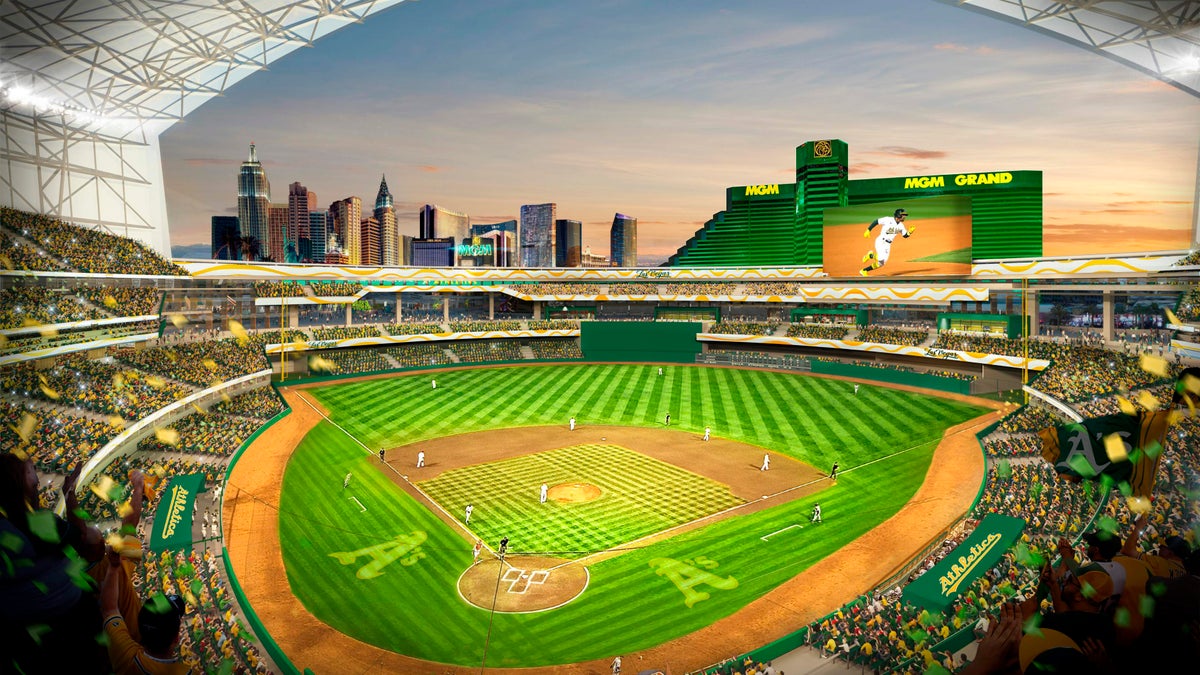
The Oakland Athletics cleared a major hurdle for their planned relocation to Las Vegas after the Nevada Legislature gave final approval on Wednesday to public funding for a portion of a proposed $1.5 billion stadium with a retractable roof.
The deal still needs the governor's signature, and MLB still must approve the A’s move to Las Vegas, but both are anticipated.
The Assembly approved the final version of the bill with $380 million in taxpayer money on a 25-15 vote after making minor changes to the measure the Senate approved on a 13-8 vote Tuesday just hours before the Vegas Golden Knights won the Stanley Cup.
The Senate accepted the changes with no debate on a voice vote Wednesday night and sent it to the governor's desk as an “emergency measure” adopted during the special legislative session that convened with Democratic majorities in both houses June 7. Republican Gov. Joe Lombardo had proposed the stadium spending plan.
The $380 million in public funding would mainly come from $180 million in transferable tax credits and $120 million in county bonds. Backers have pledged that the creation of a special tax district around the proposed stadium — that would be the smallest in Major League Baseball — would generate enough money to pay off those bonds and interest. The plan would not directly raise taxes.
The Nevada plan had revived the national debate over public funding for private sports clubs. A’s representatives and some Nevada tourism officials have said the measure could add to Las Vegas’ growing sports scene and act as an economic engine. But a growing chorus of economists and some lawmakers have warned that such a project would bring minimal benefits when compared to the hefty public price tag.
Under the deal approved Wednesday, the A’s would not owe property taxes for the publicly owned stadium. Clark County, which includes Las Vegas, would also contribute $25 million in credit toward infrastructure costs.
The Legislature’s vote is a victory in the A’s troubled search to replace Oakland Coliseum, where the team has played since arriving from Kansas City for the 1968 season. The team previously sought to build a stadium in Fremont, California, as well as San Jose and finally the Oakland waterfront — all ideas that never materialized.







